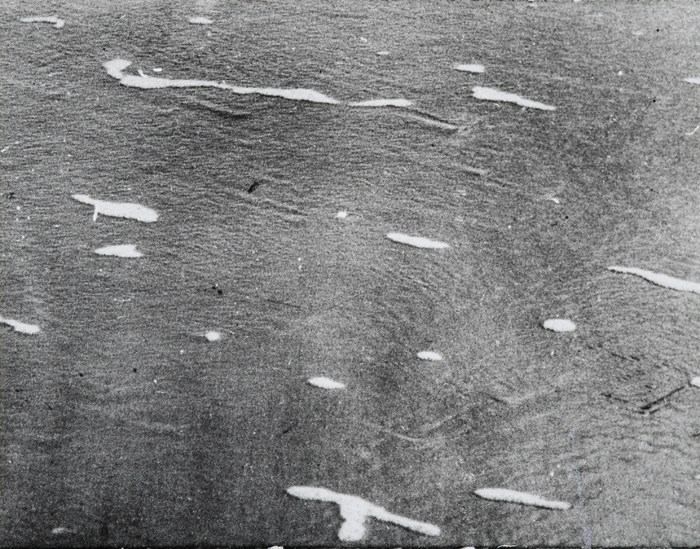
Despite its many critics, Chandigarh has also involved admiration from artists and intellectuals. This is evident in the special attention that Indian artist Nasreen Mohamedi gives to Le Corbusiers sculptural forms in some of her photographs from the 1970s. Even without knowing what she said or thought about the place, it seems clear that Mohamedi intuitively connected to the architect's aesthetic. She identifies and frames his dynamic concrete structures into an abstract graphic, dominating the picture space of her photographs, and with the crop and the extreme contrast of black and white reduces these architectural details to a silhouette delineating two triangles and a square - producing forms almost without context. In another photograph, she shoots a section of open space, across which a long low concrete wall (curved over at the top to form a bench) draws a line across the picture plane towards the foreground of the image. It is interesting to consider these images in relation to others that she shot in Fatehpur Sikh, the 16th century Mughal City in Utter Pradesh, another planned city from an earlier era but one which was quickly abandoned by its makers. Elbowing all other considerations aside, Mohamedi brings to both the same scrupulous focus on the forms at hand, the sharp geometry of a shadow cast by an architectural detail- the line of a watercourse in the glare of the afternoon sun, the flagstones that form a secondary, more muted grid. In both she reduces the spectrum of the image from the overarching grandeur of its setting to concentrate on an area more related to the human figure, a space that you could perhaps pace around in a few moments. In this sense, Mohamedi has a modernist idealism about the power of form to effect positive change - starting from the anonymous geometry of nature that provides the template, to good design which can transform the everyday, to the architectural space of the city, and of urban planning, the built environment through which the people move en masse. And also a meditation on forms arranged on the page, or even in the mind's eye, which serves to organise an internal space, to bring into equilibrium out of killer emotions and the disharmonious aspects of life, including the degeneration of the body.
In an unintended rebuttal to Le Corbusier's critics, with this formal juxtaposition, Mohamedi seems to draw a line connecting his supposedly alienated creation to an Islamic heritage of architecture and abstraction, as if on reflection his great work can after all be integrated through a quiet act of recuperation into the generous folds of India's material culture.
-Grant Watson